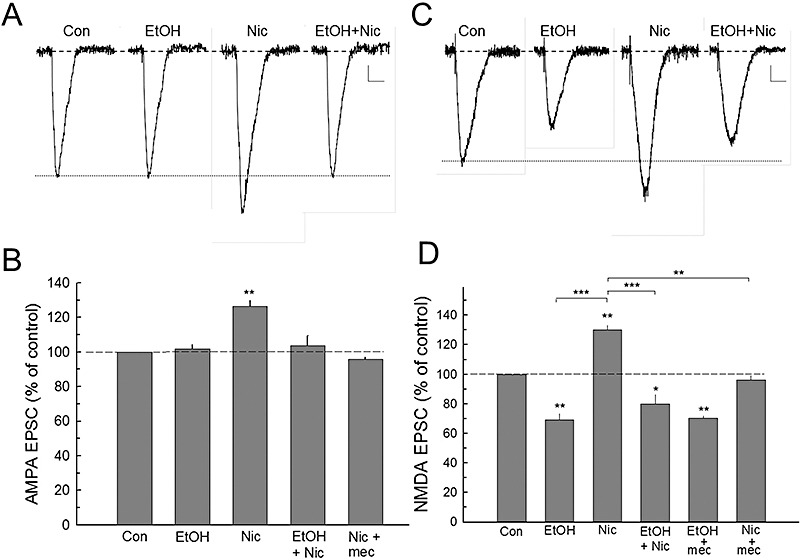Figure 5.

Ethanol attenuates the effects of nicotine on α-amino-3-hydroxy-5-methylisoxazole-4-propionic acid (AMPA) and N-methyl-d-aspartate (NMDA) receptor excitatory postsynaptic currents (EPSCs). A. Evoked response waveforms show that pharmacologically isolated AMPA receptor EPSCs are increased by nicotine (Nic), whereas ethanol (EtOH) has no significant effect on these responses. However, the enhancement of nicotine on AMPA EPSCs is prevented by ethanol pretreatment. B. The composite data show that the effects of nicotine on AMPA EPSCs are blocked by either ethanol (80 mM) or by mecamylamine (mec; 10 µM). Number of cells recorded (n): Con (8), EtOH (7), Nic (6), EtOH + Nic (6), Nic + mec (5). C. Ethanol depresses NMDA responses, while nicotine enhances this response. Pretreatment with ethanol essentially blocks the effects of subsequent nicotine application. D. Summary data of ethanol and nicotine action on the NMDA EPSC responses. Note that the general nAChR antagonist, mecamylamine, shows no alteration of the ethanol effect, but it blocks nicotine modulation. Cells recorded (n): Con (8), EtOH (7), Nic (6), EtOH + Nic (6), EtOH + mec (5), Nic + mec (4). Scale bars – A: 4 pA, 50 ms; C: 4 pA, 100 ms. *P < 0.05; **P < 0.01.
